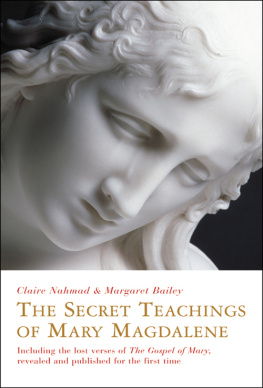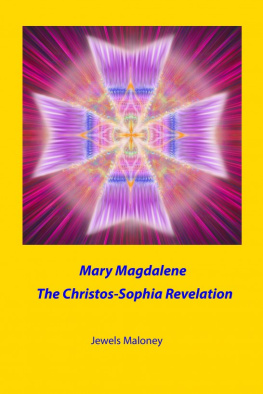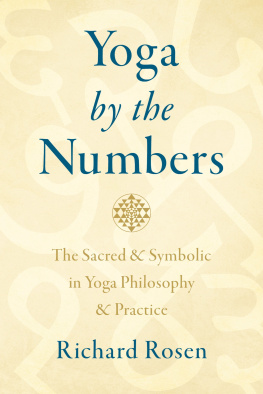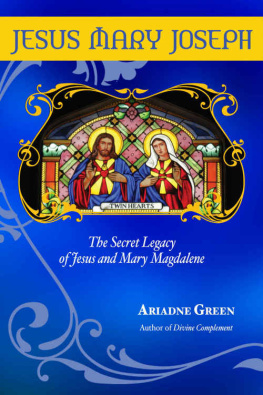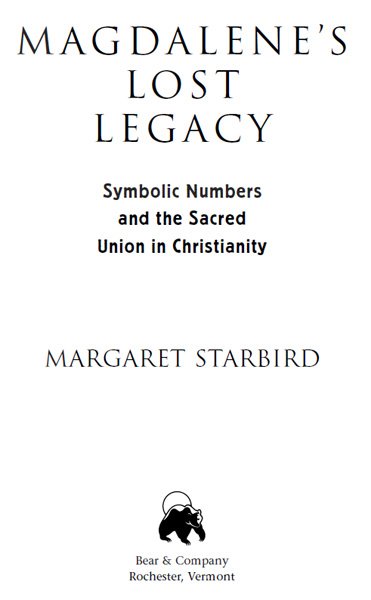
INTRODUCTION
IN SEARCH OF THE LOST BRIDE
In August 1998 when I received the galleys of my second book, The Goddess in the Gospels, I was astonished to discover that the date appearing on each page of the final printout was 22 July, the designated feast day of Mary Magdalene. But this coincidence was minor compared to the powerful emotion I felt several days later when I finished editing the text and noticed, almost accidentally, that the number printed at the top of the last page of the final chapter was 153. For me this was a moment of profound synchronicity, for 153 is the symbolic number of the Mary called the Magdalenethe sum of the numerical values of the letters of the her Greek epithet found in the canonical Gospels. And because TheGoddess in the Gospels was centered on the search for the original role and true importance of Mary Magdalene in the early Christian community, the pages printed on her feast day and the final page of text bearing her number seemed a confirmation of the quest I had undertaken. I felt I had not walked alone.
Readers of my earlier books have asked me to delve deeper into some of the themes addressed in those books: the search for the lost bride of Jesus and the archetype of the sacred union that was originally an important tenet of Christianity, but sadly lost in its later development. In part, the present volume is a response to those requests.
But an even stronger impulse for this book is my commitment to promoting a wider understanding of what I consider the original Christian mythology and doctrines that are presentin plain sight!in the symbolic numbers found in the New Testament. Because of renewed appreciation for the sacred numbers codified by Greek philosophers and Hebrew Kabbalists in ancient times, readers will most certainly be interested in examining suppressed numerical codes discovered in the Gospels passages and in the other canonical texts of Scripture commonly known as the Greek Bible.
In 1990 when I submitted the manuscript of my first book, The Woman with the Alabaster Jar, the editors decided that a chapter dealing with the symbolic numbers encoded in the Apocalypse of John (the Book of Revelation) was not entirely related to the woman who, according to the Gospel narratives, had anointed Jesus with precious unguent of nard from her alabaster jar. In this book, that rejected chapter has become the cornerstone. That chapter reveals secret meaning embedded in certain prominent Greek phrases found in the New Testament.
The authors of the New Testament applied gematriaa literary device whereby the sums of certain phrases produce significant sacred numbersto convey special concepts. The practice of assigning numerical values to words was apparently common in the ancient world. In Hebrew and in Greek there were no separate symbols to represent numbers. In each language, the letters of the alphabet stood for number values, so, inescapably, the values of letters forming each word could be added together to yield a sum called that words gematria. Certain names, epithets, and phrases of Scripture, both Hebrew and Greek, were carefully constructed so that their gematria would be consistent with the sacred numbers of the classical cosmologythe canon of sacred number derived by the mathematicians of the ancient world. The practice of gematria is like setting lyrics to music; in the Bible and other texts significant phrases were carefully and deliberately set to numbers.
Although its existence is not widely known to students of Christian Scripture, the practice of gematria throws new light on the meaning of many passages found in the New Testament. In 1971 I first encountered this use of numbers to elucidate and enhance the meaning of certain phrases in The City of Revelation by John Michell, the well-known British esoteric scholar and philosopher. His discussion of the canon of number and proportion and the implications of gematria for Christianity have had a radical influence on my own interpretation of the New Testament writings for more than thirty years.
Although the practice of gematria has continued unbroken in Hebrew, and is still used today by Orthodox Jewish rabbis, the use of numbers in interpreting the meaning of Christianitys sacred texts was anathematized by Irenaeus and other prominent Church fathers in the second and third centuries, and with the suppression of the Gnostic heresies, the practice of any kind of numbers theology apparently ceased. As Christianity spread to Western Europe, the lingua franca became Latin rather than Koin, the form of Greek spoken and written in the eastern Mediterranean in the Hellenistic and Roman periods. Near the end of the fourth century, Saint Jerome translated the Greek Scriptures into Latin, with the direct result that every trace of the gematria in the original Koin was lost. Given modern tools for computation and cross-referencing, this long-neglected interpretive practice needs to be examined for the remarkable new light it throws upon the faith of the earliest Christians. It appears that the orthodox were in many cases the real heretics!
In The Woman with the Alabaster Jar, I took certain liberties in interpreting passages from the four canonical Gospels, occasionally allowing intuition and common sense to lead to conclusions that are at variance with traditional interpretation. Many of my interpretations were triggered by hidden meanings encoded in the texts and the gematria that unlocks them. In the present work I hope to show how applying gematria to biblical texts leads to new interpretations and questions regarding these texts. For example: What did the first-century Christian communities, those for which the Gospels were written, really believe about Jesus? Which of his teachings may have been distorted? How might certain passages of Scripture have been misinterpreted? And what role can this new light play in restoring the full integrity of certain original Christian tenets?
In their passionate pursuit of the historical Jesus of Nazareth scholars like John Dominic Crossan, Geza Vermes, and Neil Douglas-Klotz have shifted focus away from the strong influence of Hellenic culture and classical philosophy on the first several centuries of the Christian movement in order to stress the Jewish or Aramaic Jesus. Jesus of Nazareth, whose story is told in the canonical Gospels, was a charismatic Jewish teacher, but the resurrected Christ found in the New Testament writings has much in common with the Greek gods Apollo and Dionysus, as well as other sacrificed godsDumuzi, Tammuz, Osiris, and Baalfrom even more ancient mythologies in the Near East.
In The Goddess in the Gospels, I presented substantial evidence for the existence of the lost bride of Jesusthe Mary whose epithet was the Magdalene. With the help of gematria I provided evidence that this woman was the true counterpart of the Lord, his bride and his beloved. Seeing Mary as the Bride of Christ may have been one reason Gnostic Christians were chastised for their numbers theology, for the raising of Mary Magdalene to preeminent status was inevitable in light of her powerful sacred number, 153, and its significant associations with the Sacred Feminine. The reader must judge the case for the sacred union of the Christ couple on the merits of a vast body of circumstantial evidence, including the disclosure of the sacred numbers associated with the archetypal partners, the Beloveds. The gematria in the Gospels reveals the pearl of great price hidden in the fieldthe mystery of the reign of God and the hieros gamos, or sacred marriage of opposite energies, at the heart of the Christian storytoo long denied. It is time to welcome the partnership paradigm with its inherent gender equality to our communal psyche and to the fundamental institutions of our civilization, both secular and religious: family, church, and government.
Next page


